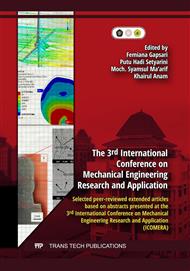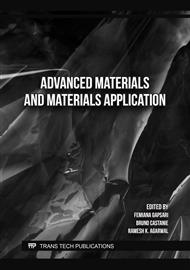p.3
p.11
p.21
p.27
p.35
p.43
p.53
p.59
Parameter Design of Sand Casting to Minimize Shrinkage Defects, Porosity Defects and Incomplete Defects
Abstract:
Casting is one of the most commonly used manufacturing method for geometrically complex product. Among the casting technologies, sand casting is often found in application. Beside the advantages of the sand-casting process, it also has a drawback that is often encountered, namely product defects. Product defects can be caused by a lack of attention to sand casting parameters. This work aims to minimize those defects, including porosity defects, shrinkage defects and incomplete defects by optimizing process parameters using the Taguchi method. The identified sand-casting process parameters include gating location, riser location, molding conditions and pouring temperature with each parameter consisting of 3 levels. This research using the fractional factorial L9 (34). Data processing is carried out by analysis of mean (ANOM) to obtain plot effects. The results showed that the optimal combination of parameters that resulted in shrinkage, porosity and minimal incomplete defects were at gating location level 2, riser location level 1, mold condition level 2 and pouring temperature level 3. The results of the comparison before and after optimization were an increase of 0.77, where previously it was 1.30 to 2.07 based on normalized data.
Info:
Periodical:
Pages:
3-9
Citation:
Online since:
May 2024
Price:
Сopyright:
© 2024 Trans Tech Publications Ltd. All Rights Reserved
Share:
Citation:



